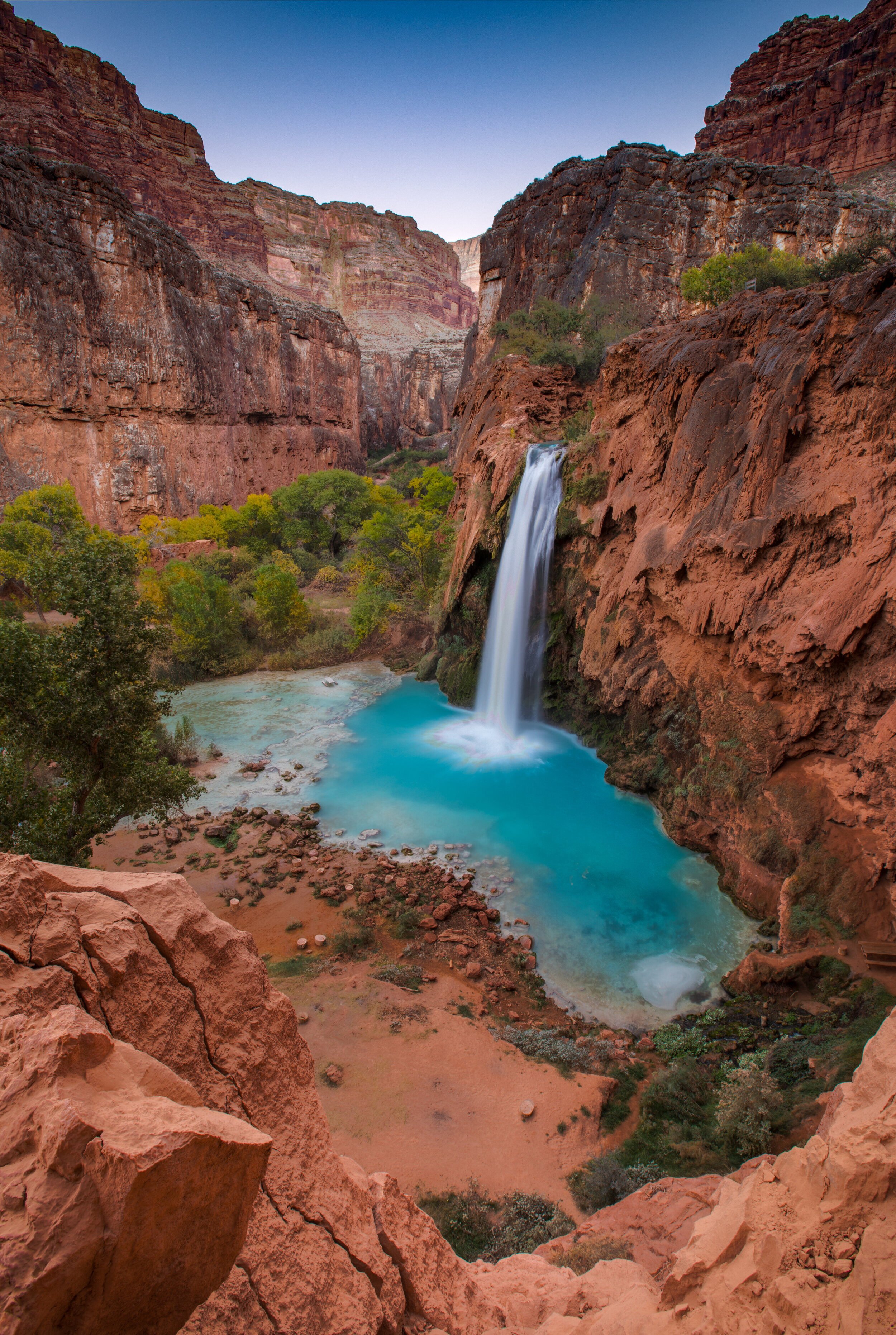Desert Architect
Architectural Style Guide
Minimalist Style
Brutalist Architecture
Brutalist architecture, often considered a subset of minimalist architecture, is characterized by its stark, monumental forms, raw concrete surfaces, and emphasis on functionality. While sometimes perceived as austere, Brutalism celebrates the inherent beauty of materials and the honesty of construction. Minimalist architecture shares a similar focus on simplicity, but often incorporates a wider range of materials and a less overtly "brutal" aesthetic.
Raw Concrete: Exposed concrete is a defining feature of Brutalism, showcasing its texture and structural capabilities. This material is often left unfinished, highlighting its raw and unadorned quality.
Geometric Forms: Brutalist buildings often feature simple, geometric shapes and repetitive elements, creating a sense of monumentality and strength. Minimalist buildings also utilize geometric forms, but may incorporate more complex compositions.
Emphasis on Functionality: Brutalist and minimalist designs prioritize function over ornamentation. The form of the building often directly reflects its purpose, with a focus on efficiency and practicality.
Minimalist Detailing: Details are kept to a minimum, allowing the essential structure and materials to take center stage. This stripped-down approach emphasizes simplicity and clarity.
Open Floor Plans (Minimalist Trend): While not always present in Brutalism, minimalist architecture often incorporates open floor plans to maximize space and light, creating a sense of airiness and flow.






Spanish Style
Colonial Architecture
Old World Charm Meets New World Functionality Evoking the romance of the Spanish Empire, Spanish Colonial architecture blends the elegance of European design with the practicality of indigenous building techniques. These homes, often found in the American Southwest and Latin America, feature thick adobe walls, courtyards, and distinctive tile roofs.
Thick Walls & Red Tile Roofs: While traditional Spanish Colonial homes utilized adobe bricks for their excellent thermal mass, many later examples, particularly in the Revival style, employed stucco over other materials like wood frame or brick. Stucco provided a similar aesthetic and offered increased durability and weather resistance. The iconic red tile roofs are a defining characteristic, adding a touch of Mediterranean flair and providing protection from the elements.
Courtyards and Patios: Inner courtyards and patios create private outdoor spaces for relaxation and entertainment, extending the living area.
Arches and Vaults: Arches and vaulted ceilings add architectural interest and a sense of grandeur, often seen in doorways, hallways, and porticoes.









Timeless Style
Contemporary Architecture
Contemporary architecture reflects the present moment, embracing innovation and forward-thinking design while drawing inspiration from the past. It's less about a specific aesthetic and more about a philosophy: creating timeless spaces that are functional, comfortable, and responsive to the way we live today.
Flexibility and Adaptability: Contemporary homes are designed with flexibility in mind, featuring open floor plans and adaptable spaces that can evolve with changing needs. Rooms may serve multiple purposes, and layouts can be easily reconfigured. Some contemporary homes even have movable walls and folding furniture or stairs.
Emphasis on Natural Light and Timeless Materials: Natural light is a key element, with large windows, skylights, and strategically placed openings maximizing daylight. Contemporary architecture often showcases natural materials like wood, stone, and concrete, celebrating their inherent beauty and texture.
Integration of Technology: Contemporary homes seamlessly integrate smart home technology, enhancing comfort, convenience, and functionality. From automated lighting and climate control to advanced security and entertainment, these systems offer personalized settings, remote control, and even predictive maintenance. Voice assistants provide hands-free control, creating a truly connected living environment.








Style that Works
Industrial Architecture
Inspired by the utilitarian aesthetic of factories and warehouses, industrial style architecture celebrates raw materials, open spaces, and a sense of history. This style embraces the beauty of exposed structural elements and functional design.
Exposed Structural Elements: A hallmark of industrial style is the showcasing of structural components like brick walls, exposed ductwork, and metal beams. These elements become part of the aesthetic, adding character and a sense of authenticity.
Open Floor Plans: Industrial spaces often feature open floor plans, reminiscent of their factory origins. This creates a sense of spaciousness and allows for flexible use of the space.
Use of Raw Materials: Industrial style embraces the inherent beauty of raw materials like brick, concrete, steel, and wood. These materials are often left unfinished or minimally treated, highlighting their texture and character.
Large Windows and Natural Light: Large windows, often factory-style, are common in industrial spaces, bringing in ample natural light and offering views of the surrounding cityscape.
Minimalist Decoration: Industrial style favors a minimalist approach to decoration, focusing on functionality and avoiding unnecessary embellishments. This allows the architectural elements to take center stage.





Simple Style
Modern Architecture
Modern style is defined by form following function. Embracing innovation and a forward-thinking approach, modern architecture prioritizes clean lines, open spaces, and the use of modern materials.
Clean Lines and Geometric Forms: Modern architecture is characterized by its emphasis on simple, geometric shapes and a lack of ornate decoration. This focus on form allows the structure itself to become a statement, highlighting the beauty of clean lines and balanced proportions.
Open Floor Plans and Natural Light: Modern homes often feature open floor plans that connect living spaces, creating a sense of spaciousness and flexibility. Large expanses of glass are a hallmark of modern design, bringing in ample natural light and blurring the lines between indoors and outdoors. This integration with the surrounding environment creates a sense of harmony and connection with nature.
Use of Industrial Materials and Emphasis on Functionality: Modern architecture frequently incorporates materials like steel, concrete, and glass, showcasing their inherent beauty and structural capabilities. Modern design prioritizes practicality and efficiency, ensuring that every element serves a purpose. This functional approach results in spaces that are not only aesthetically pleasing but also highly livable and efficient.







Organic Style
Sustainable Architecture
With growing concerns about the environment, sustainable architecture has become more important than ever. This style is all about creating buildings that are eco-friendly, energy-efficient, and in harmony with nature.
Eco-Friendly Materials: Sustainable architecture uses recycled and sustainable materials to reduce the carbon footprint of buildings. Think adobe and local rock, reclaimed wood and up-cycled metals.
Energy Efficiency: Features like green roofs, solar panels, and double-glazed windows are common in sustainable buildings. These elements help save energy and reduce costs while being kind to the planet.
Connection with Nature: Sustainable architecture often includes indoor gardens, large windows, and natural materials to create a strong connection between the indoors and the outdoors, enhancing well-being.






Ranch Style
Western Architecture
Embracing the casual comfort of suburban living, ranch-style homes offer a practical and relaxed approach to architecture. These homes, typically single-story, prioritize functionality and indoor-outdoor connection.
Open Plan Living: Ranch houses often feature open floor plans that connect living, dining, and kitchen areas, fostering a sense of spaciousness and informality for family togetherness.
Attached Garages: A hallmark of the ranch style, attached garages provide convenient access and often contribute to the home's symmetrical facade.
Horizontal Emphasis: Ranch homes emphasize their horizontal lines, creating a low-slung profile that blends seamlessly with the landscape.
Large Windows & Glass Doors: Ranch houses often feature large windows and doors that bring in ample natural light and offer views of the surrounding yard. The goal here is to bring the outdoors in and the indoors out to make the entire lot an integrated living space.






Architectural Services
Learn about our 5 stage process to help you design and build your dream home.
Site Selection Services
Learn about our process to help you select the best property for your future home.
Architectural Style Guide
See our homes in all the desert architectural styles you can choose from for your home.
Arizona Climate Guide
Learn about the 4 different desert climates of Arizona to help you select which is right for you.
Desert Building Strategies
Learn about strategies to beat the heat and harsh conditions of the desert to make a house an oasis.
Desert Building Technologies
Learn about desert building technologies that aren't just cool, but make desert living cooler.
Desert Building Materials
Learn about all the available building materials and which ones do well in the desert and are right for you.
Desert Architect Articles
Read articles by Desert Architect on architecture, architectural trends, and innovations.


Arizona Relocation Guide
Learn about Arizona and all the great places to relocate to in state 48.
Arizona Climate Guide
Learn about the 4 different desert climates of Arizona to help you select which is right for you.
Sustainable Desert Living
Learn how to live sustainably in desert ecosystems to increase the value of your home and life in Arizona.
Adventures in Arizona
Learn about all the incredible adventures Arizona has to offer to live life to the fullest in the Grand Canyon state.
Ready to start your Journey
The Desert Architect team is here to help you with your project.